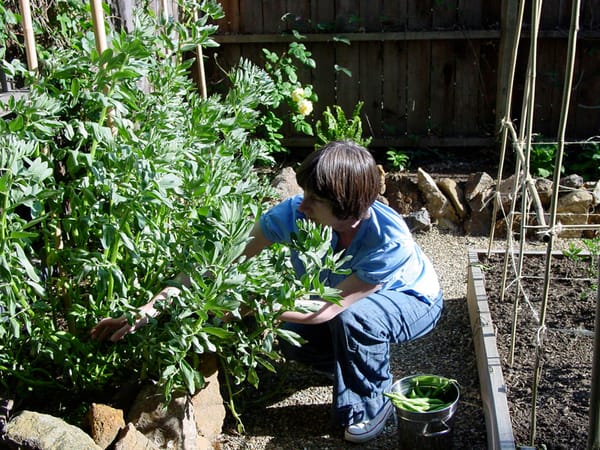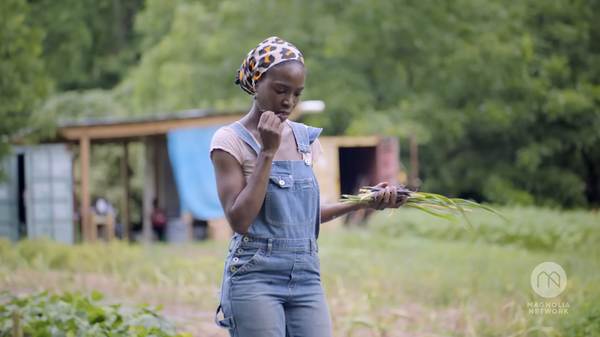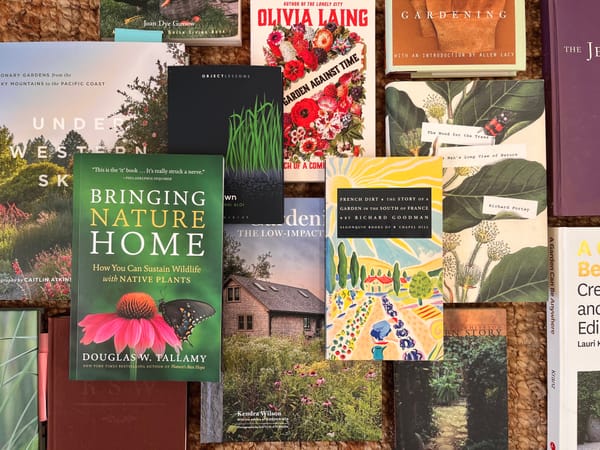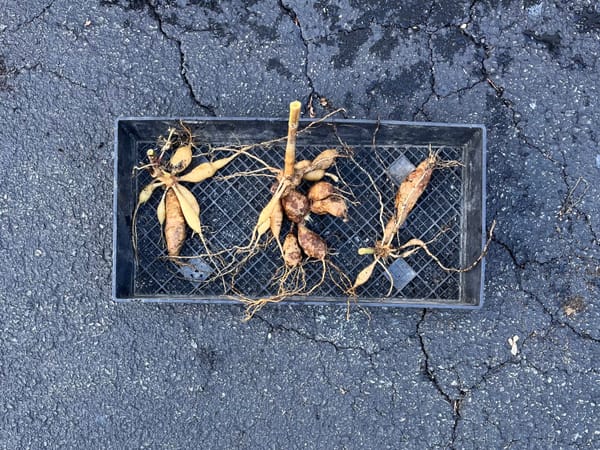Linking About: Saving seeds, leaving leaves, and our collective loss of smells ...
A very October link list.
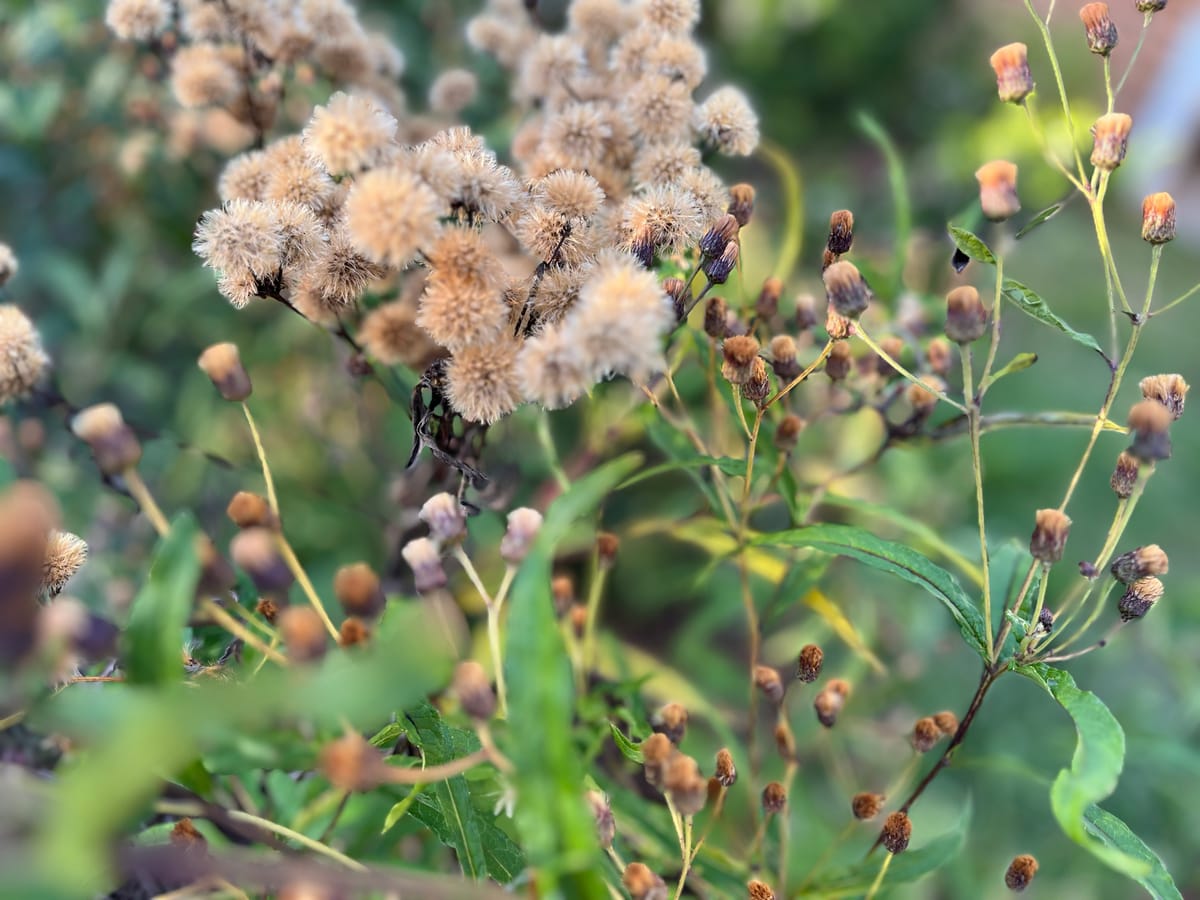
Every garden friend who’s been here lately has asked for Ironweed seeds, which I’m more than happy to share with them, while still leaving loads for the birds. Having only gardened in perennial climates before, and not really being a flower gardener, seed-saving was always one of those charming things I’ve read about Real Gardeners doing that still hasn’t sunk in as a part of my life now. Even though I’ve always grown vegetables mostly from seed, I’ve never really saved them, but the story below about seeds as “eco-mutualism” really got to me. Same goes for trees that drop leaves. I grew up with winters and deciduous trees — and raking chores — and then when we first moved here we had no trees or leaves at all. So this is my first year getting to practice what I’ve shared others preaching in recent years, with regard to leaving the leaves for the greater good.
• I found this video of gardening editor Clare Foster wandering her garden saving various seeds oddly calming and soothing amidst the chaos of the world. (It’s also sort of here — with more — in article form as well.)
• The simple yet profound act of seed-saving gets elevated to both art and “eco-mutualism” in a sculpture by ceramicist Richard Bresnahan: “After having quintuple bypass heart surgery in 2017, Bresnahan says he ‘started seeing this particular idea of a sculpture project in the dream world.’ ... The work weaves together the ideas, people, and practices Bresnahan holds dear. Like his ancestors’ grain bin, it’s a literal storehouse of seeds.” Don’t miss this story.
• Love this beautifully concise line: “Leaves aren’t waste, they’re life support” (also future soil) — from a post by @planitwild summarizing Seven Ways You Are Preserving the Ecosystem When You Leave the Leaves This Fall.
• Here’s some more in-depth info on actual do’s and don’ts for the leaves you leave.
• And a factoid from Giovanni Aloi’s mighty little book Lawn (more on it here) that’s worth a pull quote: “A 2011 study revealed that running a leaf blower for 30 minutes creates more emissions than driving a F-150 pickup truck 3800 miles. The powerful air jet is comparable to the devastating force of wind blowing at 180 to 200 miles per hour: this can damage plants and kill insects and other creatures that dwell close to the ground. More than any other gardening equipment, the leaf blower embodies the utter absurdity of our convoluted relationship with grass.”
• Speaking of Plan It Wild (which is a sustainable landscape design company north of Manhattan), they’ve just released a quiz to help us each understand how we could be more ecologically minded gardeners, and how we’re doing toward that end. It’s the Wildr Score quiz, which you can read more about in the NYTimes here (gift link)
• “... If climate change has a smell, it may be of absence. Cocoa husks gone cold in Grenada, cumin fields in Afghanistan left scentless, roses in Bulgaria withering too soon, jasmine in Egypt flowering before dawn. These are not small losses. On the front lines of a warming world, vanishing scents mean vanishing livelihoods and the cultures built around them. ...” So much to think about it in this Atmos piece on When the World Stops Smelling Like Itself.
Thank you for being here with me, thinking about these things. I’d love to hear from you below! And would you perhaps do me a favor? Please share this post (or any other you’ve found value in) with a friend, family member or anyone else you think might appreciate it — it would mean the world to me.

